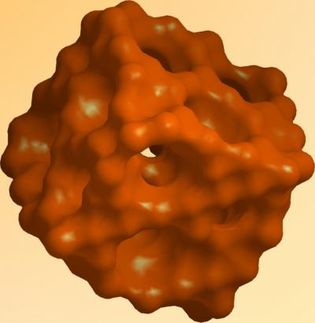Compound removes radioactive material from power plant waste
Layered sulfides bond to strontium 90, other radioactive ions
Advertisement
strontium 90 is a common radioactive by-product of fission in nuclear power plants. When extracted from the reactor along with other isotopes, a mixture is created made up of the radioactive material and inert ions like sodium and calcium.
Scientists at U.S. Department of Energy's Argonne National Laboratory and Northwestern University have developed a compound that captures the radioactive ions so they can be siphoned off and separated from inert material.
"The layered sulfides used work quite well,' scientist Mercouri Kanatzidis said. "We even surprised ourselves."
This mixture is often incredibly acidic or alkaline, making it difficult to find a compound that can survive long enough to extract the strontium and be able to not react with the sodium, which is harmless. Kanatzidis and colleague Manolis Manos created a synthetic compound made up of sulfides that can survive in the harsh acidic or alkaline climate of the mixture and strips away 99 percent of the strontium 90.
"The material is remarkably simple and can be created in large quantities at a relatively low cost," Kanatzidis said.
The synthetic compound trades its own potassium ions for strontium and can almost completely replace the radioactive element within a few hours. The next step is to experiment with the compound's ability to siphon away other common radioactive elements like cesium and uranium.
Most read news
Other news from the department science

Get the chemical industry in your inbox
By submitting this form you agree that LUMITOS AG will send you the newsletter(s) selected above by email. Your data will not be passed on to third parties. Your data will be stored and processed in accordance with our data protection regulations. LUMITOS may contact you by email for the purpose of advertising or market and opinion surveys. You can revoke your consent at any time without giving reasons to LUMITOS AG, Ernst-Augustin-Str. 2, 12489 Berlin, Germany or by e-mail at revoke@lumitos.com with effect for the future. In addition, each email contains a link to unsubscribe from the corresponding newsletter.






























































